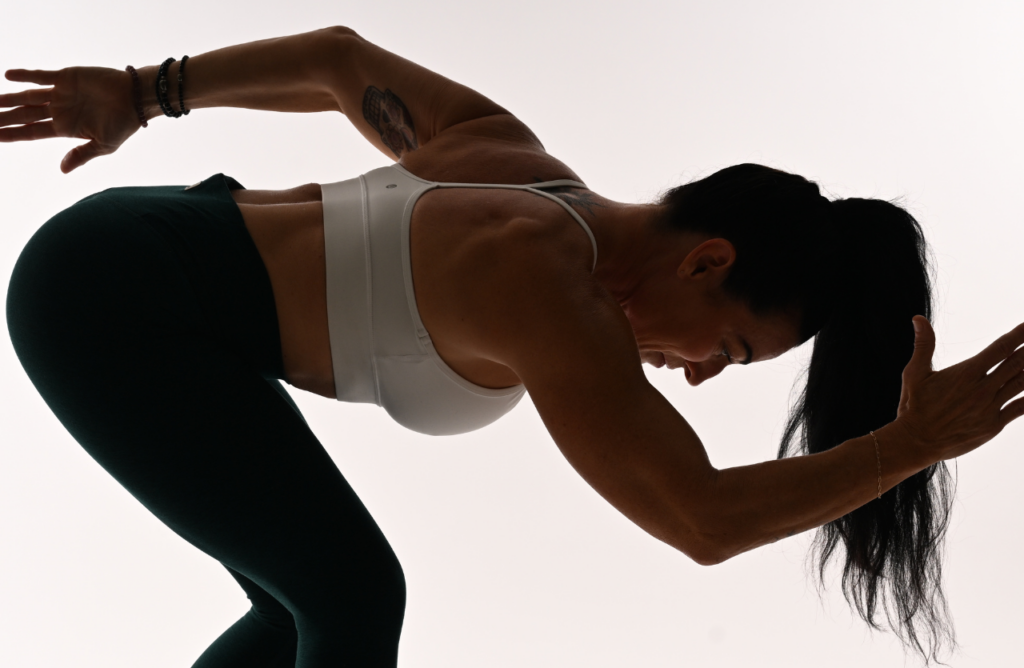
Restorative Yoga
*change or cancel anytime.
Need to recharge from a heavy workout, stressful day, or recent injury? Restorative Yoga classes will leave you feeling rested, refreshed, and relaxed.
What is Restorative Yoga?
Restorative Yoga is a slow style of yoga that encourages total physical and emotional relaxation. It focuses on long-held movements and deep breathing and uses a series of props and supports to help you achieve proper alignment.
You can expect to hold Restorative Yoga asanas (poses) for 5 minutes or more. This means you may only perform a handful of poses in one yoga class.
Why You’ll Love Restorative Yoga
If you’re looking to slow things down and counter a fast-paced life off the mat, Restorative Yoga will help you find your perfect balance. During class, you will experience:
- Decreased stress and anxiety
- Mental and emotional relaxation
- A greater sense of tranquility
What to Expect
If you take a Restorative Yoga class, your teacher will communicate which props you should have with you. You will move slowly through a series of 4-6 postures, each held for five minutes or more.
During class, you will focus on your breathwork. You may have a guided meditation depending on your teacher’s style. At the end of class, you can expect to feel deeply relaxed.
Benefits of Restorative Yoga
Restorative Yoga can help to increase your flexibility, improve your posture, and relieve tension and anxiety.
Restorative Yoga, in particular, is known for its ability to activate the parasympathetic nervous system. This is the part of your nervous system that relaxes your body after stress or danger and controls your digestive system and metabolism.
By resting in asanas for longer periods of time, you can also stretch your deep fascia, and achieve a more meditative state.
Get Started Today
Try a Restorative Yoga class online with one of our highly trained teachers. Your first 14 days are FREE.
*change or cancel anytime.
MORE STYLES OF YOGA
A Class for Your Every Need
Explore our diverse range of yoga and Pilates classes online:
FAQs About Restorative Yoga
What is the difference between Restorative Yoga and Therapeutic Yoga?
While “restorative” and “therapeutic” may sound like similar styles, they are very different types of yoga. Restorative Yoga postures are held for long periods of time. In Therapeutic Yoga classes, on the other hand, you practice fluid movements synchronized with your breath.
Who is Restorative Yoga best for?
Yoga practitioners of all levels can benefit from Restorative Yoga. In particular, Restorative Yoga benefits people who are looking to increase flexibility, reach deeper levels of relaxation, relieve tension, and overcome injury or illness.
What is Restorative Yoga’s history?
Restorative Yoga is based on the teachings of B.K.S. Iyengar, just like Iyengar Yoga. He came up with the idea for Restorative Yoga after he was in a car accident that dislocated his spine.
Iyengar determined that there needed to be a better way to help disabled and injured people practice yoga. By using gentle poses and props to support the body, Iyengar made Restorative Yoga accessible to everyone.
Why are so many props used in Restorative Yoga?
Restorative Yoga relies on bolsters, blocks, and folded blankets to make your asanas gentler and more supportive. These props can help you achieve the correct alignment, and allow you to completely relax and surrender into your pose.
What are some common Restorative Yoga postures?
Some of the main Restorative Yoga postures include:
Supported Child’s Pose (Balasana)
Start in a Tabletop position and place a couple of stacked blankets between your thighs. Lean back toward your heels, widen your knees, and touch your big toes together. Let your torso rest on top of the blankets, and stretch your arms out in front of you.
Supported Bridge Pose (Setu Bandha Sarvangasana)
Lie on your back with your knees bent and feet on the floor about hip distance apart. Using your heels and your core muscles, lift your pelvis a few inches off the ground, and slide a yoga block under your lower back to support your tailbone.
Supported Reclined Twist (Supta Matsyendrasana)
Lie on your back with your knees bent and feet on the floor. Lower your knees slowly to one side. Place a bolster or two stacked blankets between your inner thighs. You can also place a rolled blanket behind your neck for support.
Supported Legs-Up-the-Wall Pose (Viparita Karani)
Place a bolster or a few folded blankets several inches from a wall. Lay one more folded blanket lengthwise from the top edge of your bolster. Rest your lower back on the bolster and extend your legs upward to rest against the wall.
Supported Corpse Pose (Savasana)
Lie on your back with your arms resting by your sides. Place a bolster or rolled-up blanket behind the backs of your knees to keep them soft and relaxed.








